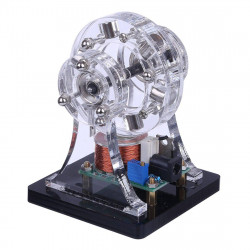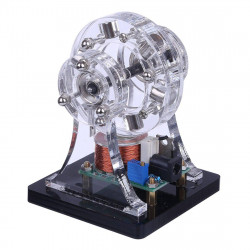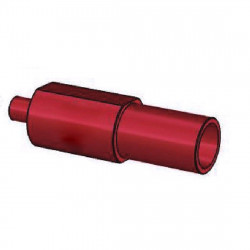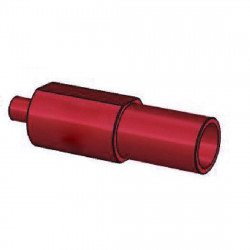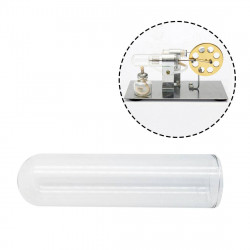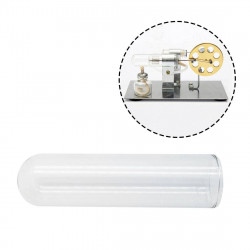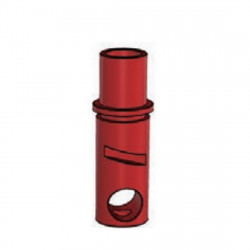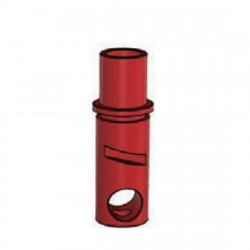
Is It Worth Buying an SEMTO ST-NF2 Two two-cylinder engine Kit?
Can you buy a small, four-stroke OHC engine kit that runs on nitromethane for $149.99? Would it be a good investment for both beginners and experienced enthusiasts? About 25 huge cups of coffee would cost $150. It was an obvious choice because I wouldn't say I like coffee.
I am an absolute engine novice because I have never had a Toyan small engine.
Sincerely, I approached my SEMTO Motor / Toyan FS-L200AC-OT kit with the mindset that "$150 isn't gonna buy much" when I acquired it from V8engineforsale https://www.v8engineforsale.com/model-engine/v-twin-v2-engine-model/connecting-rod-for-cison-fg-9vt-v2-engine-model last week.
The packaging for the Otto Motor FS-L200AC-OT kit was attractively stacked. Every component in the kit has a unique black foam cutout that reveals the polish and intricacy of each piece.
Beautifully CNC machined black anodized aluminum makes up the crankcase.
Other components include the valve cover, idler, crank pulley, cam synchronous pulley, and bright red anodized parts. The valve cover has the Otto Motor SOHC emblem laser etched on it. The parts have a beautiful appearance, and it was evident that the manufacturer was pleased with their creation.
A plastic compartment container holding small parts was labeled with numbers and graphics matching each area's contents.
The assembly manual is available in QR form, so updates and modifications can be made directly to the instructions. I studied the assembly manual cover to cover before starting to build the engine. Step-by-step instructions are provided in an easy-to-understand format.
The introduction includes a components diagram with package locations and an assembly diagram drawing of the engine parts. Finding every part used in the kit is simple, thanks to the explicit pictures and numbers assigned to each part.
The assembly places the starting pulley and flywheel after the crankshaft assembly, which comes first, along with the bearings and seals.
The piston rings go on each piston. They can be easily put into the cylinder sleeves with the piston ring compressor tool that is provided. By using this tool, the iron piston rings are kept from misaligning and possibly breaking.
The con-rod bearings are matched parts that stop seizing or friction from mismatched bearings. Each rod and rod cap receives a mark when the team puts the connecting rods on the crankshaft.
The bottom cover and crankcase gaskets for the engine are then mounted.
The team installs the cam drive pulley, seals, and bearings into the engine's cylinder head. Applying a small amount of lubricant to every cam seal before putting the camshaft into the cylinder head proved beneficial.
No unique tool is required, and no flying tiny valve springs or retainers could slow down the build because the valves, springs, and retainers are already set in the cylinder head.
Six hex bolts attach the finished head and head gasket to the engine block.
Next, the team assembles the rocker arms, sets them atop the rocker arm support, and fastens them using E clips.
The rocker assemblies are mounted on the valve springs after four-valve spring buckets. I lubricated the camshaft and valve springs before attaching the buckets and fastening the rocker components. For the valvetrain, any high-temperature red grease will function well.
Using a special intake manifold replacement, a single, dual-needle carburetor feeds both engine cylinders.
A diaphragm-style fuel pump is integrated into the carburetor, a feature not found in many engines of the same model. Regardless of the RPM range, the pump ensures the car has enough gasoline. The unusual carb configuration truly intrigued me.
When the engine is running, accessing the throttle lever and needles is also simple and safe.
Next, the cooling fan with belt tensioner, idler, pulley, and engine timing belt are fitted to the block.
A tick mark on the camshaft drive pulley that matches a mark on the crankshaft timing belt pulley makes timing simple. It is straightforward to start the engine on time and rapidly check the timing by lining up the two pulleys. A sliding bracket located beneath the cooling fan adjusts the timing belt tension. I did as Dennis Dempsey said and added some lubricant before installing the tensioning slider.
Next are the belt, starter motor, and starter motor bracket. You may change the starter belt tension by just relocating the motor and undoing the hex cap screws on the starter motor.
The final tasks were to install the glow plugs from the package. We also needed to put in the valve cover gasket. Lastly, we installed the exhaust header pipes and gaskets.
V8engineforsale's starter accessory set has a fuel tank and silicone fuel tubing. It also includes two glow plug drivers. These drivers have Deans-style battery connections. There is a resistor to lower the battery voltage to 1.5 volts.
Lovely accessory—few have a 1.5 volt rechargeable battery and two handheld glow plug ignitors. You can use any R/C battery, but I used two 7.4v lipo batteries for each glow plug.
VP 20% Basher gasoline was my choice for the FS-L200AC-OT.
I only checked and adjusted the idle setting; I didn't change the OEM carb needle settings. The engine fired up and idled right away.
Way too awesome! Given my environment and fuel preference, I probably would have been required to modify the carb. Let the engine run idle for a few minutes to allow the glow plugs to warm up. The engine stopped when I unplugged the glow plugs, and I discovered that the factory carb settings were too rich. Testing revealed that the primary needle needed to be leaned out or turned clockwise until the engine ran smoothly without power to the glow plugs. This was done by leaning the carburetor 1/4 turn at a time. The engine ran cool, and the only carb setting was still rich enough for break-in. It took around three seconds for the engine's RPMs to rise when the fuel line was pinched, indicating that the engine was still on the safe and prosperous break-in side.
This engine revs so responsively, man!
The no-load rev is faster than I predicted, even on a rich-carb setting. After filling up three 75cc fuel tanks, I increased the RPM speeds. The exhaust is loud; the small L2 has a noticeable bark. I switched to a 16-ounce fuel bottle, which is more extensive and can run for extended periods. I played with it so much that around 10 or 11 p.m., I used a few silicone tubes to funnel the exhaust into a bath towel to keep the neighbors pleased.
With no load, the average cylinder temperature of the SEMTO Motor was 120 degrees Fahrenheit, with variations of only 5 degrees on either side. It was highly responsive throughout the entire fuel tank, which is fantastic. The motor functioned flawlessly all the time. After using 3/4 of a gallon of VP (20%), I will remove the valve and bottom crankcase cover to inspect them for wear, tighten the internal bolts again, and thread lock them.
